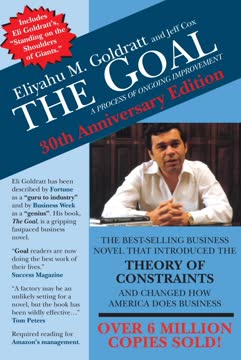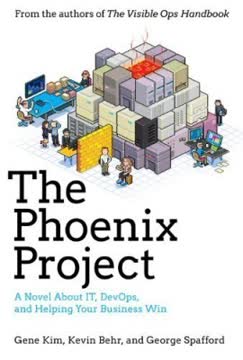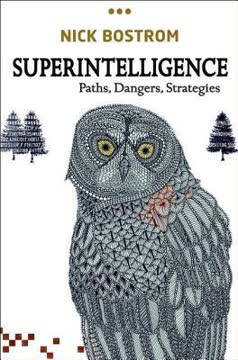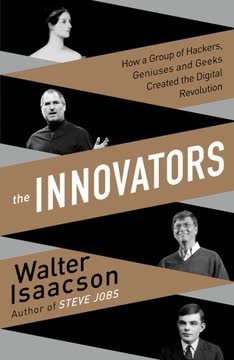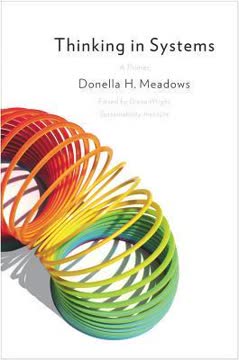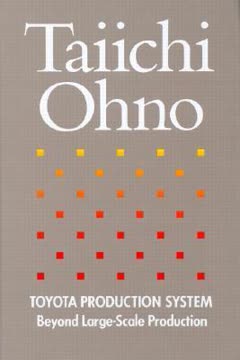重点摘要
1. 及时制:丰田生产系统的基础
“及时制”意味着在流动过程中,装配所需的正确零件在需要时到达装配线,并且仅在需要的数量上到达。
革新生产流程。 及时制(JIT)是丰田生产系统的基石,旨在通过仅生产所需的产品、在需要时生产、并在需要的数量上生产来消除浪费。这种方法大大减少了库存,降低了存储成本,并暴露了生产过程中的低效之处。
实施JIT。 为了实现JIT,丰田:
- 重新组织工厂布局以创建材料的逻辑流动
- 缩短设置时间以允许更小的批量生产
- 实施拉动系统,下游工序向上游工序发出需求信号
- 与供应商建立紧密关系以确保可靠和及时的交付
JIT系统需要整个供应链的高度协调和纪律,但其好处包括提高质量、降低成本和增强对市场需求的响应能力。
2. 自働化:智能自动化与人性化结合
自働化也改变了管理的意义。当机器正常工作时,不需要操作员。只有当机器因异常情况停止时,才需要人工干预。
赋能机器和工人。 自働化,或“带有人性化的自动化”,是丰田生产系统的第二个支柱。它涉及为机器配备检测异常并自动停止的能力,防止生产缺陷品,并解放工人以专注于更有价值的任务。
自働化的关键方面:
- 自动检测缺陷或异常
- 问题发生时立即停止
- 清晰的信号系统(如安灯板)以提醒工人
- 赋予工人停止生产线的权力
这种方法不仅提高了质量,还增强了工人的参与感和责任感。通过将人类智慧与机器效率相结合,自働化创造了一个更灵活和响应迅速的生产系统。
3. 消除浪费:降低成本和提高效率的关键
丰田生产系统,倡导绝对消除浪费的两个支柱,出于必要在日本诞生。
识别和消除浪费。 不断追求消除浪费是丰田生产系统的核心。浪费,或日语中的“muda”,被定义为从客户角度看不增加产品或服务价值的任何活动。
丰田识别了七种浪费:
- 过度生产
- 等待
- 运输
- 过度加工
- 库存
- 动作
- 缺陷
通过系统地识别和消除这些浪费,丰田能够显著降低成本,提高质量,并提高效率。这种方法需要对所有过程进行持续观察、分析和改进,培养整个组织的精益思维文化。
4. 看板:管理生产流程的可视化工具
看板总是伴随着货物,因此是及时生产的基本通信工具。
简化生产控制。 看板,日语意为“看板”,是一种在JIT生产环境中管理和控制材料流动的可视化系统。它作为生产线不同工序之间的简单而有效的通信工具。
看板系统的关键要素:
- 授权生产或移动材料的卡片或信号
- 严格的看板使用规则
- 不断减少看板数量以暴露低效
看板有助于防止过度生产,减少库存,并改善材料在生产过程中的整体流动。它还赋予工人管理自己工作的权力,并通过使问题可见来促进持续改进的文化。
5. 持续改进:追求完美
据说改进是永恒和无限的。那些使用看板工作的人有责任不断以创造力和资源fulness改进它,而不允许它在任何阶段固定下来。
改善文化。 持续改进,或日语中的“kaizen”,是丰田生产系统的基本原则。它涉及定期进行小的增量变化,以提高效率、质量和工作条件。
持续改进的关键方面:
- 所有员工参与改进工作
- 关注过程而非结果
- 鼓励实验和从失败中学习
- 定期反思和分享最佳实践
这种方法培养了创新和适应能力的文化,使丰田能够不断发展其生产系统并保持竞争优势。它还赋予各级工人对公司成功的贡献,提高了工作满意度和生产力。
6. 生产平衡:平衡需求和产能
生产平衡在应对汽车市场的多样化需求方面,比计划的大规模生产系统更有优势。
平滑生产流程。 生产平衡,或日语中的“heijunka”,是通过平衡生产量和产品组合来平衡生产的实践。丰田不是生产大量单一型号,而是在线上生产不同型号的小批量。
生产平衡的好处:
- 减少库存和资本成本
- 更灵活地响应客户需求
- 更平滑地利用劳动力和机器
- 减轻上游工序和供应商的负担
通过实施生产平衡,丰田能够在其生产系统中实现更高的效率和灵活性,使其能够更好地应对市场波动和多样化的客户需求。
7. 生产灵活性:适应市场变化
丰田生产系统在消除生产中的浪费、不一致和过剩方面非常彻底。它绝不是一种被动或防御性的管理系统。
制造业的敏捷性。 丰田生产系统强调灵活性,以快速适应不断变化的市场条件。这种灵活性通过多种手段实现,包括多技能工人、可适应的机械和快速转换技术。
生产灵活性的关键要素:
- 交叉培训工人以执行多项任务
- 设计机械以便快速设置更改
- 实施小批量生产
- 与供应商保持紧密关系以实现响应性采购
这种灵活性使丰田能够高效地生产各种型号和不同数量的产品,有效地响应市场需求而不会产生过多库存或产能。
8. 观察和提问的力量
整天站在生产现场观察——你最终会发现需要做什么。我不能过分强调这一点。
现地现物。 这一原则,意为“亲自去看”,强调在解决问题和改进中直接观察的重要性。大野鼓励管理者和工程师花时间在工厂车间,亲自观察过程并提出问题。
“五个为什么”技术:
- 识别问题
- 问“五个为什么”以深入挖掘根本原因
- 每个答案构成下一个问题的基础
- 继续直到找到根本原因
- 制定和实施对策
这种方法促进了对过程和挑战的更深入理解,从而导致更有效的解决方案和改进。
9. 尊重人:制造中的人性因素
管理层的责任是识别多余的人力并有效利用它。在业务良好和生产高峰时雇用人手,只是在衰退时裁员或提前退休是不好的做法。
重视人力资本。 丰田生产系统非常重视尊重和发展人。包括工人、供应商和客户。该系统认识到,参与、技能和赋权的工人对于持续改进和长期成功至关重要。
尊重人的关键方面:
- 工作保障和长期就业
- 持续培训和技能发展
- 赋权工人停止生产并提出改进建议
- 团队合作和相互协助
通过投资于其员工并培养尊重和合作的文化,丰田能够在经济条件挑战时保持高水平的生产力和创新。
10. 向福特学习:适应和发展大规模生产
我相信福特是天生的理性主义者——每次读他的著作时我都更有这种感觉。他对美国工业有一种深思熟虑和科学的思考方式。
发展大规模生产。 虽然丰田从福特的大规模生产系统中学到了很多,但它也认识到需要调整这些原则以适应日本独特的经济和文化背景。大野仔细研究了福特的思想,但开发了一个更灵活和高效的系统,适合生产各种型号的小批量。
福特系统的关键调整:
- 强调流动而不是大批量生产
- 关注消除所有形式的浪费
- 开发灵活的生产线
- 实施基于实际需求的拉动生产
通过在福特的基础上进行创新以应对新挑战,丰田创建了一个对全球制造实践产生重大影响的生产系统。
最后更新日期:
FAQ
What's "Toyota Production System: Beyond Large-Scale Production" about?
- Overview of TPS: The book by Taiichi Ohno explores the Toyota Production System (TPS), a manufacturing methodology focused on efficiency and waste reduction.
- Historical Context: It provides insights into how TPS evolved in response to Japan's post-war economic conditions and the oil crisis of the 1970s.
- Core Principles: The book emphasizes the principles of just-in-time production and autonomation, or automation with a human touch.
- Practical Application: It includes practical examples and case studies of how TPS has been implemented in Toyota and other companies.
Why should I read "Toyota Production System: Beyond Large-Scale Production"?
- Learn from the Best: Taiichi Ohno is credited with creating the TPS, which has revolutionized manufacturing worldwide.
- Efficiency and Waste Reduction: The book offers valuable insights into reducing waste and improving efficiency in production processes.
- Broader Business Application: While focused on manufacturing, the principles can be applied to various business operations.
- Historical Insight: It provides a historical perspective on how Toyota became a leader in the automotive industry.
What are the key takeaways of "Toyota Production System: Beyond Large-Scale Production"?
- Elimination of Waste: The primary goal of TPS is to eliminate waste in all forms, including overproduction, waiting, and defects.
- Just-In-Time Production: Producing only what is needed, when it is needed, to minimize inventory and reduce costs.
- Autonomation: Integrating human intelligence into machines to prevent defects and improve efficiency.
- Continuous Improvement: Emphasizes the importance of ongoing improvement and adaptation to changing market conditions.
What is Just-In-Time production according to Taiichi Ohno?
- Definition: Just-In-Time (JIT) is a production strategy that aims to improve a business's return on investment by reducing in-process inventory and associated carrying costs.
- Demand-Driven: It involves producing only what is needed, when it is needed, based on actual customer demand.
- Inventory Reduction: JIT helps in minimizing inventory levels, thereby reducing storage costs and waste.
- Synchronization: It requires synchronization of all production processes to ensure smooth flow and timely delivery.
How does Taiichi Ohno define Autonomation?
- Automation with a Human Touch: Autonomation refers to machines that can detect and stop when an abnormality occurs, integrating human intelligence into automation.
- Prevention of Defects: It prevents the production of defective products by stopping the process when an issue is detected.
- Efficiency Improvement: Allows one worker to manage multiple machines, increasing production efficiency.
- Historical Origin: The concept originated from Toyoda Sakichi's invention of an auto-activated loom.
What are the "Five Why's" in the Toyota Production System?
- Root Cause Analysis: The "Five Why's" is a problem-solving technique used to explore the cause-and-effect relationships underlying a particular problem.
- Asking Why: By asking "why" five times, you can uncover the root cause of a problem rather than just addressing its symptoms.
- Example Application: The book provides examples, such as identifying why a machine stopped, to illustrate the method.
- Foundation of TPS: This technique is a fundamental part of the scientific approach that underpins the Toyota Production System.
What is Kanban and its role in TPS?
- Visual Management Tool: Kanban is a scheduling system for lean and just-in-time production, using cards to signal the need to move materials within a production facility.
- Information Flow: It facilitates communication between different processes, ensuring that parts are produced and delivered just in time.
- Prevention of Overproduction: By controlling the flow of materials, Kanban helps prevent overproduction and excess inventory.
- Flexibility and Adaptation: The system is adaptable and can be used to manage production even when demand is unstable.
How does Taiichi Ohno view the relationship between teamwork and individual skill?
- Teamwork Importance: Ohno emphasizes that manufacturing is a team effort, similar to sports, where coordination and harmony are crucial.
- Individual Skill: While individual skills are important, they must be integrated into the team's efforts to achieve overall success.
- Baton Passing Analogy: He uses the analogy of a relay race to describe how work should be passed smoothly between team members.
- Continuous Practice: Like sports, continuous practice and training are essential for improving teamwork and individual skills.
What is the significance of "Production Leveling" in TPS?
- Smoothing Production: Production leveling, or heijunka, involves smoothing out production to avoid peaks and valleys in the manufacturing process.
- Demand Fluctuation Management: It helps manage fluctuations in demand by producing a consistent mix of products.
- Efficiency Improvement: By leveling production, companies can reduce waste and improve efficiency across the supply chain.
- Market Adaptation: It allows Toyota to adapt to diverse market demands without sacrificing efficiency.
What does Taiichi Ohno mean by "Management by Ninjutsu"?
- Creative Management: Ohno uses the term "ninjutsu" to describe a management style that is creative and adaptable, akin to the art of invisibility.
- Beyond Arithmetic: He argues that management should not rely solely on numbers and calculations but also on intuition and creativity.
- Training and Skill: Emphasizes the importance of training and developing skills to achieve management goals.
- Cultural Reflection: The concept reflects Japanese cultural values and the unique approach of the Toyota Production System.
What are the best quotes from "Toyota Production System: Beyond Large-Scale Production" and what do they mean?
- "The basis of the Toyota production system is the absolute elimination of waste." This quote highlights the core principle of TPS, focusing on waste reduction to improve efficiency.
- "Just-in-time means that, in a flow process, the right parts needed in assembly reach the assembly line at the time they are needed and only in the amount needed." It explains the essence of JIT, emphasizing timely and precise production.
- "Autonomation means transferring human intelligence to a machine." This quote underscores the importance of integrating human judgment into automated processes to prevent defects.
- "A production line that does not stop is either a perfect line or a line with big problems." It suggests that stopping the line to address issues is crucial for continuous improvement and quality control.
How does "Toyota Production System: Beyond Large-Scale Production" compare to the Ford System?
- Mass Production vs. Lean Production: The Ford system focuses on mass production, while the Toyota system emphasizes lean production and waste reduction.
- Lot Sizes: Ford's system involves large lot sizes, whereas Toyota's system advocates for small lot sizes and quick setups.
- Flow and Synchronization: Toyota's system synchronizes production processes to ensure a smooth flow, unlike the batch production in the Ford system.
- Adaptability: The Toyota system is more adaptable to changing market demands, making it suitable for periods of low growth.
评论
丰田生产方式由大野耐一撰写,被广泛认为是精益制造领域的奠基之作。读者们称赞其对关键概念如准时生产、看板和消除浪费的简明阐述。许多人认为这本书对理解现代管理实践的起源,包括敏捷方法论,具有启发性。尽管有些人指出书中的写作有时会显得重复或难以跟随,但大多数人一致认为这是对运营、流程改进和业务效率感兴趣的人必读之作。书中的历史背景和哲学方法常被认为是其宝贵的方面。
Similar Books
